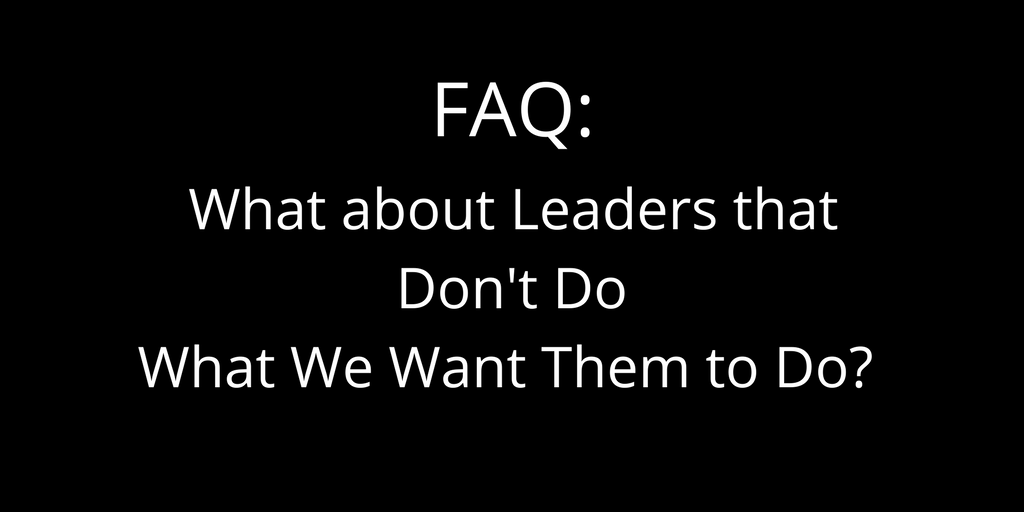FAQ: What about leaders that don’t do what we want them to do?
 I get questions. In fact, I get a LOT of questions. Sometimes they come directly to me via email or a comment here on the blog. Other times they come to me via a Facebook post or some other indirect route.
I get questions. In fact, I get a LOT of questions. Sometimes they come directly to me via email or a comment here on the blog. Other times they come to me via a Facebook post or some other indirect route.
Here’s one I get fairly often, even frequently. I get you’ve asked or wondered a version of this one:
What do you do if group leaders are not consistently meeting or struggling with their group members showing up? How do you hold them accountable?
Sound familiar?
I thought so.
Here’s my answer:
Actually, here’s the way I answered the question.
The first thing I did was ask another question. Here’s the question I asked:
How did they become leaders? How did their group begin (i.e., where did their members come from)?
Do you know why I asked that question?
I asked that question because the situation is almost always the result of the design being used. In this case it turns out that:
- Prospective leaders (who were currently members in groups) were called and invited to consider leading a new group.
- These prospective leaders were given the group leader covenant and a full explanation of what it means to be a group leader. They were also asked to commit to lead the new group for three quarters.
- Those that agreed to the covenant were invited to host tables outside the auditorium for 2 to 3 weeks, taking sign-ups from prospective group members. The prospective group members were committing to one quarter.
Remember, I believe Andy Stanley is correct and that “your system is perfectly designed to produce the results you are currently experiencing.”
Now, here’s my answer:
Newly recruited prospective leaders whose members are assigned to them (or who join the group at a groups fair or event), are often in a precarious position. When prospective group members sign up to attend a new group a lot can change in between signing up and showing up. Can it work? Absolutely. This is essentially an element of the strategy used by North Coast and others who use the semester system.
Keep in mind that showing up at a stranger’s home for the first meeting is not easy for unconnected people taking a first step toward community. To lessen the degree of uncertainty, it is advisable to train the new leaders well to follow up immediately after sign-up and put several elements into motion. See my handout, The ABCs of a Great First Meeting.
One of the real advantages of an event like a small group connection or North Point’s GroupLink is that the newly formed group gathers first on-campus and spends enough time with the leader and other members of the group to help overcome their fears of showing up at a stranger’s house. See also, How to Launch New Groups with a Small Group Connection and North Point’s Small Group System.
My answer to the accountability question:
Further Reading:
The Best Training for Small Group Leaders
FAQ: How Are You Training New Leaders These Days?
What Can I “Require” of My Small Group Leaders?
From Here to There: The Preferred Future for Small Group Leaders

